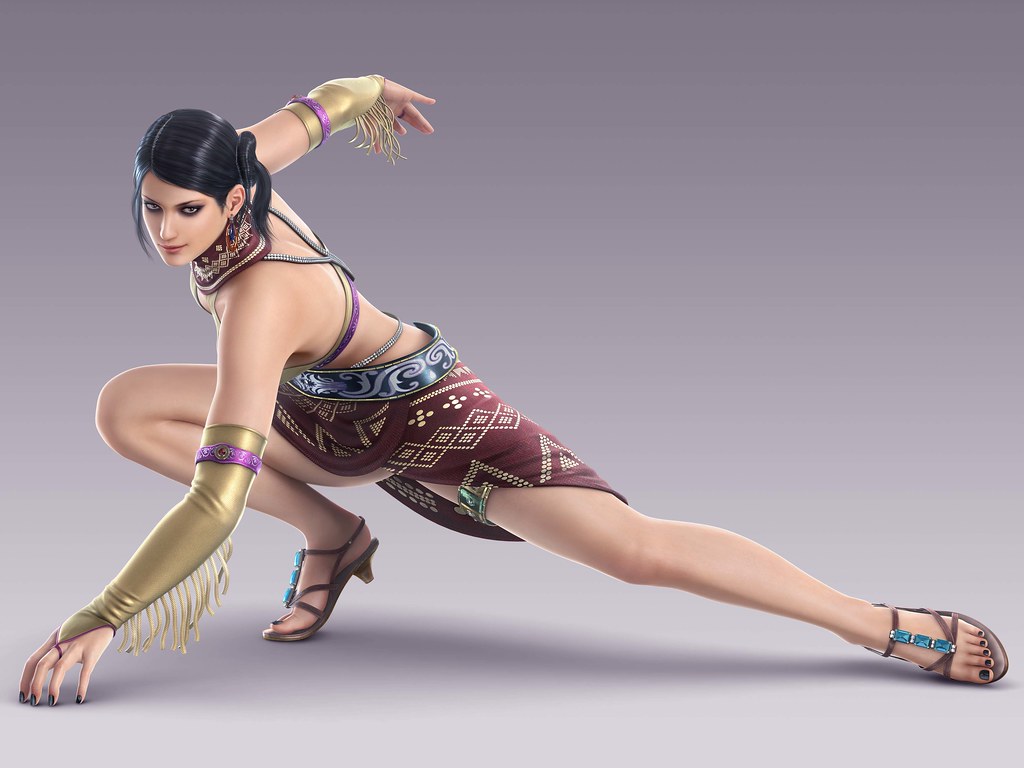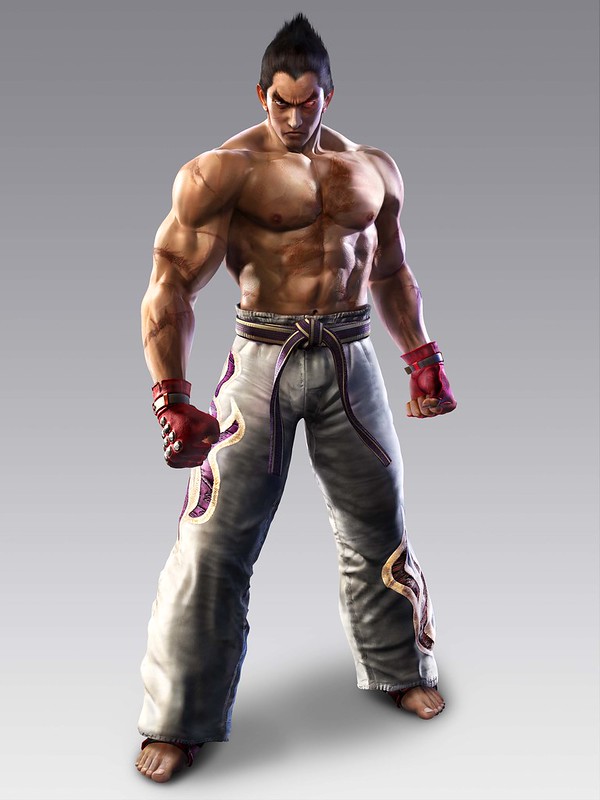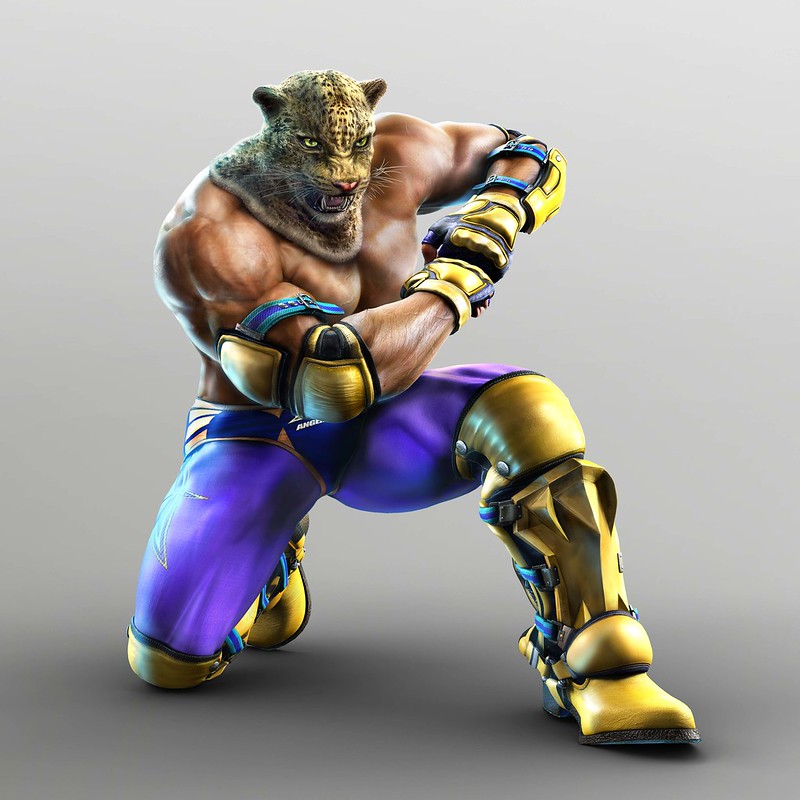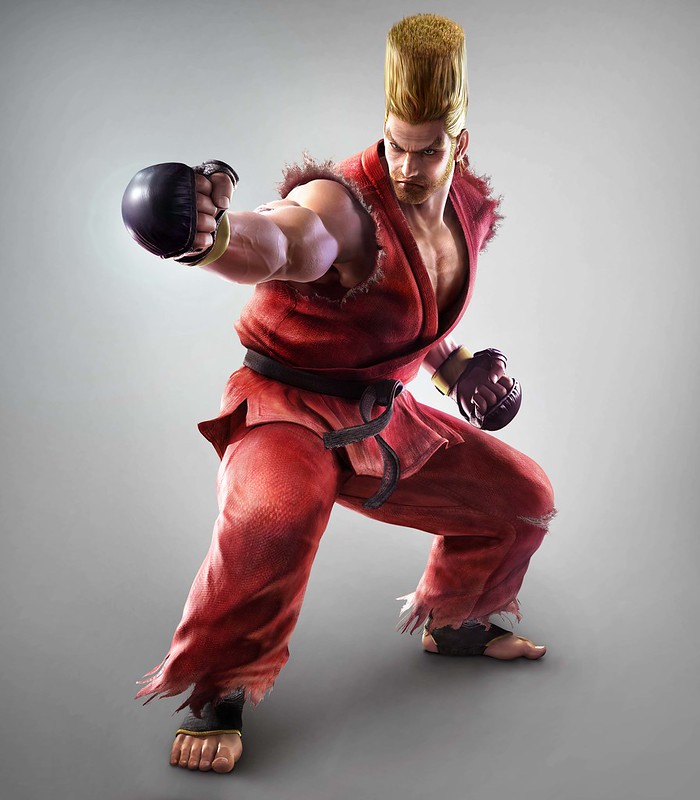
Bandai Namco Entertainment’s Tekken series is one of the first franchises that comes to mind when most gamers think of the fighting game genre. Debuting in arcades in 1994, Tekken helped put 3D fighting games on the map with its stylish characters, comedy, groundbreaking gameplay, and polygonal graphics. These accomplishments would continue throughout the series and keep it at the forefront of the genre well past the arcade era.
Tekken’s success continued in the console market as the iconic franchise debuted on the PlayStation, and the series and the system evolved side by side. Each installment pushed new console limitations, making every entry a prime showcase of each PlayStation.
With Tekken 8’s release on the horizon, it’s time for another collision between The King of Iron Fist Tournament and PlayStation. Let’s take a look at how the series has evolved and become so intertwined with each console.
Tekken: Iron-fisted beginnings
Tekken | U.S. Release 1995 | PlayStation
After a successful arcade run, Tekken made its console debut on the original PlayStation. Releasing two months after the console’s launch, Tekken immediately mirrored its initial success in the home console realm.
The groundwork for the rest of the series is instantly recognizable here. The focus on pushing hardware limits by featuring detailed graphics and 60 frames-per-second made it a must-play title with an easy-to-learn yet hard-to-master control scheme of two punch buttons and two kicks that the series still features made the game an instant competitive and party hit for homes everywhere.
And who can forget the roster of more than memorable fighters that the PlayStation experience made even more notable? It featured full-motion video cutscenes, and players could unlock sub-bosses like Armor King and the final boss, Heihachi, as playable characters.
Even after a year-long arcade run, Tekken garnered just as much praise on consoles, making it an easy choice for Bandai Namco Entertainment to continue the series for years to come.
Tekken 2: Refining the formula
Tekken 2 | U.S. Release 1996 | PlayStation
Tekken 2 hit arcades in 1995 and came home to PlayStation consoles once more in 1996. While the original set the basis for the series, this sequel’s additions make it immediately more recognizable to fans.
Players were greeted with a jump from 17 to 25 playable characters, including newcomers like Bruce, Roger, and Jun Kazama. Many of these characters came equipped with new battle mechanics like unique sidesteps, chain-throws, backthrows, and special reversal attacks. There was also the addition of new staple modes like Time Attack, Team Battle, Survival, and Practice mode. These features took Tekken to new heights, making Tekken 2 one of the highest-sold PlayStation titles.
This title also marked the beginning of Kazuya’s reign as the villain of the series, and its ending teased Jin’s future as its protagonist.
Tekken 3: A more familiar face
Tekken 3 | U.S. Release 1998 | PlayStation
Tekken returned with another PlayStation hit in Tekken 3. Staple characters like Jin, Eddy Gordo, Xiaoyu, Bryan Fury, Hwoarang, Law, and Julia joined the roster.
The largest addition here came in the form of changes to movement, such as shortened jumping heights. Side throws and sidesteps were also added, along with moves that can be performed during a sidestep. Several fighters were given access to reversals, and certain characters were granted combo throws. This brought Tekken a lot closer to the title we see now.
As with Tekken 2, the PlayStation version added exclusive modes, making Tekken 3 the debut of the beat-em-up minigame Tekken Force, and the volleyball-esque Tekken Ball.
Tekken Tag Tournament: 2-on-2 goodness
Tekken Tag Tournament | U.S. Release 2000 | PlayStation 2
Tekken made its PlayStation 2 debut with the first entry of the spin-off series Tekken Tag Tournament. This time around, fighters would challenge one another as a duo. Now, with the press of a button, players can switch between their two characters, each with various hidden attributes depending on the pairing of the characters, making tag combos, throws, and different tactics possible. But once one character on either team is defeated, the match is over.
The PlayStation 2 version implemented upgraded graphics over the arcade version and even more modes. At home, players gained the ability to play a classic 1-vs-1 mode, a team battle with up to eight matches to decide the victor and the debut of the bowling minigame Tekken Bowl.
Tekken 4: A dynamic reintroduction
Tekken 4 | U.S. Release 2002 | PlayStation 2
Tekken returned to its mainline series with Tekken 4, introducing some of the grandest changes to the formula since the beginning. The game became darker than before, reviving a once-dead Kazuya. This was aided by an upgraded graphics engine that dynamically affected lighting, surfaces, and physics. And who can forget that banger soundtrack?
Players could suddenly move even before a round began, and the environment was given more importance. The introduction of walled stages allowed for extended and more damaging combos. This prompted the debut of corner escapes to allow for comebacks.
Once again, the PlayStation version included Tekken Force and a new Story Mode featuring cutscenes.
Tekken 5: Modern movement
Tekken 5 | U.S. Release 2005 | PlayStation 2
Whereas Tekken 4 emphasizes varying environments, Tekken 5 tones things down slightly. Uneven stage ground was removed to make movement smoother and faster. However, the character count is another story with 32 characters in the base roster, including Devil Jin’s debut.
The title also introduces the high crush, and low crush attack moves that the game is known for. For the first time, fighters could be customized with different outfits, colors, and additional items gained with in-game currency.
The new PlayStation-exclusive mode is Devil Within, a new take on Tekken Force where players control Jin as he travels through maze-like stages with the ability to become Devil Jin.
Tekken 6: Taking the battle online
Tekken 6 | U.S. Release 2009 | PlayStation 3
Tekken 6 introduced the series to the PlayStation 3, keeping most of the franchise’s previous elements and adding things like the Rage system. This allowed players to do more damage as their health decreased.
Stage dynamics were also brought back to the forefront, allowing walls to be knocked down and opening levels up to more environments. Bound attacks were also added, giving fighters a new move that knocks enemies to the ground, bouncing them back up, and leaving them vulnerable to follow-up combos.
Once more, a beat-em-up mode called Scenario Campaign was exclusive to console versions. The biggest addition came in the form of online matches, making long-distance battles and co-op Scenario Campaign experiences possible for the first time.
Tekken Tag Tournament 2: Return to tag
Tekken Tag Tournament 2 | U.S. Release 2012 | PlayStation 3
Tekken followed up its original spin-off with Tag Tournament 2, which keeps most of the original rules but with a few upgrades. Extended tag combos are now achievable, and combos where both characters simultaneously attack the opponent are called Tag Assaults, which introduced new strategies.
Additional modes that made matches 1-on-1, 2-on-2, or 1-on-2 and allowed four different players to control each fighter added more variety to the mix. Characters’ health and power were scaled accordingly to the match type. This also marks the first time Tekken added more learning tools like a tutorial mode, Fight Lab.
Tekken 7: New heights
Tekken 7 | U.S. Release 2017 | PlayStation 4
Tekken made its presence known on the PlayStation 4 in a big way. New mechanics were added to make the offense more dangerous than ever.
Rage Arts brought cinematic super attacks to the world of Tekken. Power Crushes gave players the ability to absorb a hit of a low or high attack, continuing the offensive even when opposed. Rage Drives added more decisions to be made, as players could instead use Rage to gain a powered-up version of a specific move.

The most notable piece of Tekken 7’s history is the addition of several guest fighters, including The Walking Dead’s Negan, Final Fantasy XV’s Noctis, SNK’s Geese Howard, and Street Fighter’s Akuma.
Tekken 8: The future of iron fist
Tekken 8 | U.S. Release 2024 | PlayStation 5
Now we all await Tekken 8, the first title of the series to skip arcades and have its initial launch on PlayStation consoles. This title begins where Tekken 7 left off, focusing heavily on the wild offensive. The new Heat System gives fighters access to chip damage, more attacks, guard breaks, and even dash cancellable moves.

Along with these changes comes another upgrade to the graphics engine with the implementation of Unreal Engine 5. This gives Tekken 8 an even more dynamic look and physics than titles of the past.
Tekken 8 will continue the legacy when it releases for PS5 on January 26.
Bandai Namco Entertainment’s Tekken series is one of the first franchises that comes to mind when most gamers think of the fighting game genre. Debuting in arcades in 1994, Tekken helped put 3D fighting games on the map with its stylish characters, comedy, groundbreaking gameplay, and polygonal graphics. These accomplishments would continue throughout the series and keep it at the forefront of the genre well past the arcade era.
Tekken’s success continued in the console market as the iconic franchise debuted on the PlayStation, and the series and the system evolved side by side. Each installment pushed new console limitations, making every entry a prime showcase of each PlayStation.
With Tekken 8’s release on the horizon, it’s time for another collision between The King of Iron Fist Tournament and PlayStation. Let’s take a look at how the series has evolved and become so intertwined with each console.
Tekken: Iron-fisted beginnings
Tekken | U.S. Release 1995 | PlayStation
After a successful arcade run, Tekken made its console debut on the original PlayStation. Releasing two months after the console’s launch, Tekken immediately mirrored its initial success in the home console realm.
The groundwork for the rest of the series is instantly recognizable here. The focus on pushing hardware limits by featuring detailed graphics and 60 frames-per-second made it a must-play title with an easy-to-learn yet hard-to-master control scheme of two punch buttons and two kicks that the series still features made the game an instant competitive and party hit for homes everywhere.
And who can forget the roster of more than memorable fighters that the PlayStation experience made even more notable? It featured full-motion video cutscenes, and players could unlock sub-bosses like Armor King and the final boss, Heihachi, as playable characters.
Even after a year-long arcade run, Tekken garnered just as much praise on consoles, making it an easy choice for Bandai Namco Entertainment to continue the series for years to come.
Tekken 2: Refining the formula
Tekken 2 | U.S. Release 1996 | PlayStation
Tekken 2 hit arcades in 1995 and came home to PlayStation consoles once more in 1996. While the original set the basis for the series, this sequel’s additions make it immediately more recognizable to fans.
Players were greeted with a jump from 17 to 25 playable characters, including newcomers like Bruce, Roger, and Jun Kazama. Many of these characters came equipped with new battle mechanics like unique sidesteps, chain-throws, backthrows, and special reversal attacks. There was also the addition of new staple modes like Time Attack, Team Battle, Survival, and Practice mode. These features took Tekken to new heights, making Tekken 2 one of the highest-sold PlayStation titles.
This title also marked the beginning of Kazuya’s reign as the villain of the series, and its ending teased Jin’s future as its protagonist.
Tekken 3: A more familiar face
Tekken 3 | U.S. Release 1998 | PlayStation
Tekken returned with another PlayStation hit in Tekken 3. Staple characters like Jin, Eddy Gordo, Xiaoyu, Bryan Fury, Hwoarang, Law, and Julia joined the roster.
The largest addition here came in the form of changes to movement, such as shortened jumping heights. Side throws and sidesteps were also added, along with moves that can be performed during a sidestep. Several fighters were given access to reversals, and certain characters were granted combo throws. This brought Tekken a lot closer to the title we see now.
As with Tekken 2, the PlayStation version added exclusive modes, making Tekken 3 the debut of the beat-em-up minigame Tekken Force, and the volleyball-esque Tekken Ball.
Tekken Tag Tournament: 2-on-2 goodness
Tekken Tag Tournament | U.S. Release 2000 | PlayStation 2
Tekken made its PlayStation 2 debut with the first entry of the spin-off series Tekken Tag Tournament. This time around, fighters would challenge one another as a duo. Now, with the press of a button, players can switch between their two characters, each with various hidden attributes depending on the pairing of the characters, making tag combos, throws, and different tactics possible. But once one character on either team is defeated, the match is over.
The PlayStation 2 version implemented upgraded graphics over the arcade version and even more modes. At home, players gained the ability to play a classic 1-vs-1 mode, a team battle with up to eight matches to decide the victor and the debut of the bowling minigame Tekken Bowl.
Tekken 4: A dynamic reintroduction
Tekken 4 | U.S. Release 2002 | PlayStation 2
Tekken returned to its mainline series with Tekken 4, introducing some of the grandest changes to the formula since the beginning. The game became darker than before, reviving a once-dead Kazuya. This was aided by an upgraded graphics engine that dynamically affected lighting, surfaces, and physics. And who can forget that banger soundtrack?
Players could suddenly move even before a round began, and the environment was given more importance. The introduction of walled stages allowed for extended and more damaging combos. This prompted the debut of corner escapes to allow for comebacks.
Once again, the PlayStation version included Tekken Force and a new Story Mode featuring cutscenes.
Tekken 5: Modern movement
Tekken 5 | U.S. Release 2005 | PlayStation 2
Whereas Tekken 4 emphasizes varying environments, Tekken 5 tones things down slightly. Uneven stage ground was removed to make movement smoother and faster. However, the character count is another story with 32 characters in the base roster, including Devil Jin’s debut.
The title also introduces the high crush, and low crush attack moves that the game is known for. For the first time, fighters could be customized with different outfits, colors, and additional items gained with in-game currency.
The new PlayStation-exclusive mode is Devil Within, a new take on Tekken Force where players control Jin as he travels through maze-like stages with the ability to become Devil Jin.
Tekken 6: Taking the battle online
Tekken 6 | U.S. Release 2009 | PlayStation 3
Tekken 6 introduced the series to the PlayStation 3, keeping most of the franchise’s previous elements and adding things like the Rage system. This allowed players to do more damage as their health decreased.
Stage dynamics were also brought back to the forefront, allowing walls to be knocked down and opening levels up to more environments. Bound attacks were also added, giving fighters a new move that knocks enemies to the ground, bouncing them back up, and leaving them vulnerable to follow-up combos.
Once more, a beat-em-up mode called Scenario Campaign was exclusive to console versions. The biggest addition came in the form of online matches, making long-distance battles and co-op Scenario Campaign experiences possible for the first time.
Tekken Tag Tournament 2: Return to tag
Tekken Tag Tournament 2 | U.S. Release 2012 | PlayStation 3
Tekken followed up its original spin-off with Tag Tournament 2, which keeps most of the original rules but with a few upgrades. Extended tag combos are now achievable, and combos where both characters simultaneously attack the opponent are called Tag Assaults, which introduced new strategies.
Additional modes that made matches 1-on-1, 2-on-2, or 1-on-2 and allowed four different players to control each fighter added more variety to the mix. Characters’ health and power were scaled accordingly to the match type. This also marks the first time Tekken added more learning tools like a tutorial mode, Fight Lab.
Tekken 7: New heights
Tekken 7 | U.S. Release 2017 | PlayStation 4
Tekken made its presence known on the PlayStation 4 in a big way. New mechanics were added to make the offense more dangerous than ever.
Rage Arts brought cinematic super attacks to the world of Tekken. Power Crushes gave players the ability to absorb a hit of a low or high attack, continuing the offensive even when opposed. Rage Drives added more decisions to be made, as players could instead use Rage to gain a powered-up version of a specific move.

The most notable piece of Tekken 7’s history is the addition of several guest fighters, including The Walking Dead’s Negan, Final Fantasy XV’s Noctis, SNK’s Geese Howard, and Street Fighter’s Akuma.
Tekken 8: The future of iron fist
Tekken 8 | U.S. Release 2024 | PlayStation 5
Now we all await Tekken 8, the first title of the series to skip arcades and have its initial launch on PlayStation consoles. This title begins where Tekken 7 left off, focusing heavily on the wild offensive. The new Heat System gives fighters access to chip damage, more attacks, guard breaks, and even dash cancellable moves.

Along with these changes comes another upgrade to the graphics engine with the implementation of Unreal Engine 5. This gives Tekken 8 an even more dynamic look and physics than titles of the past.
Tekken 8 will continue the legacy when it releases for PS5 on January 26.



















